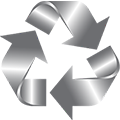3 things to look for in energy-consuming devices.
As awareness of the environmental crisis increases, buyers are putting the sustainability and environmental compatibility of products high on the agenda when making purchasing decisions. Yet these decisions present a conundrum; how to be environmentally responsible when the purchases you need to make will inherently consume energy?
We highlight 3 things to look for in energy-consuming devices to help lower your impact on the environment and reduce your energy bills.
1. Look for the Energy Label and compliance to environmental directives.
Modern technology consumes far less electricity compared to older technology. This has led to a recent revision of the Energy Rating Label used to categorise the energy efficiency of electronic devices. Investing in the latest technologies will help reduce energy consumption and lower energy bills.
The Energy Label tells you how much electricity the product uses in kilowatt hours (kWh) whilst operating at pre-determined functionality settings. The lower the figure the less energy it will use but the rating is only relevant when used to directly compare like-for-like products.
Seen on product packaging and the datasheet, there are many environmental and safety directives that manufacturers of electronic equipment must adhere to, although not all are relevant for all product categories, nor across all regions. Look out for these accreditations:
Energy Star is used on office equipment and shows that the device has achieved energy efficiency standards as set by the EU.
TCO certification means the device maintains ecological standards and is designed ergonomically to prevent long term health issues for users.
TCO Edge is a supplemental certification to TCO Certified, intended for best-in-class products meeting leading edge sustainability criteria.
ErP compliant relates to EU defined requirements for the environmentally sound design of energy consuming products.
WEEE stands for Waste Electrical and Electronic Equipment, compliance ensures that correct recycling and disposal procedures are adhered to.
RoHS restricts the use of certain hazardous materials found in electrical and electronic products.
ISO 14001 is a global environmental management Standard demonstrating an organisation’s commitment to reducing its environmental impact.

2. Look for ECO modes and energy saving functionality.
More than 80% of the CO2 footprint of an electronic device is created during usage, so finding ways to improve energy efficiency is the best lever to reducing your environmental impact.
Responsible manufacturers will offer ECO Mode functionality to minimise energy use by, for instance, lowering performance levels, which will also enhance longevity.
Inbuilt sensor technology will trigger power up/down according to usage demands or environmental conditions, and scheduling tools allow devices to be switched on/off at certain times of the day. Your IT/AV integration partner will help you put these tools into use to optimise energy savings.
Provision of a carbon savings calculator assists in administration and reporting of CO₂ reductions.

3. Look for high build quality and reliable long-lasting performance.
A fundamental contributor to sustainability is quality. Reliable and durable, the product lifecycle is extended, deferring replacement, and therefore waste, over a longer period.
Also linked to quality is the serviceability of a device. A quality manufacturer will offer spare parts and a tailored service program to extend the lifecycle through repair and refurbishment.
Where a business is working to a refresh cycle of typically 5 years, a quality device should continue to provide good performance beyond this timeframe, allowing it to be repurposed elsewhere, perhaps offered to charitable organisations.
Look for design features which allow the device to be reconfigured or upgraded in the future.
Devices constructed mainly of metal, rather than plastic, offer robust longevity and, ultimately, when the device finally reaches end of life, feeds the circular economy through 100% recyclability.

Found out how Sharp/NEC prioritises Quality, Service and Sustainability in helping its customers achieve their sustainability goals.
